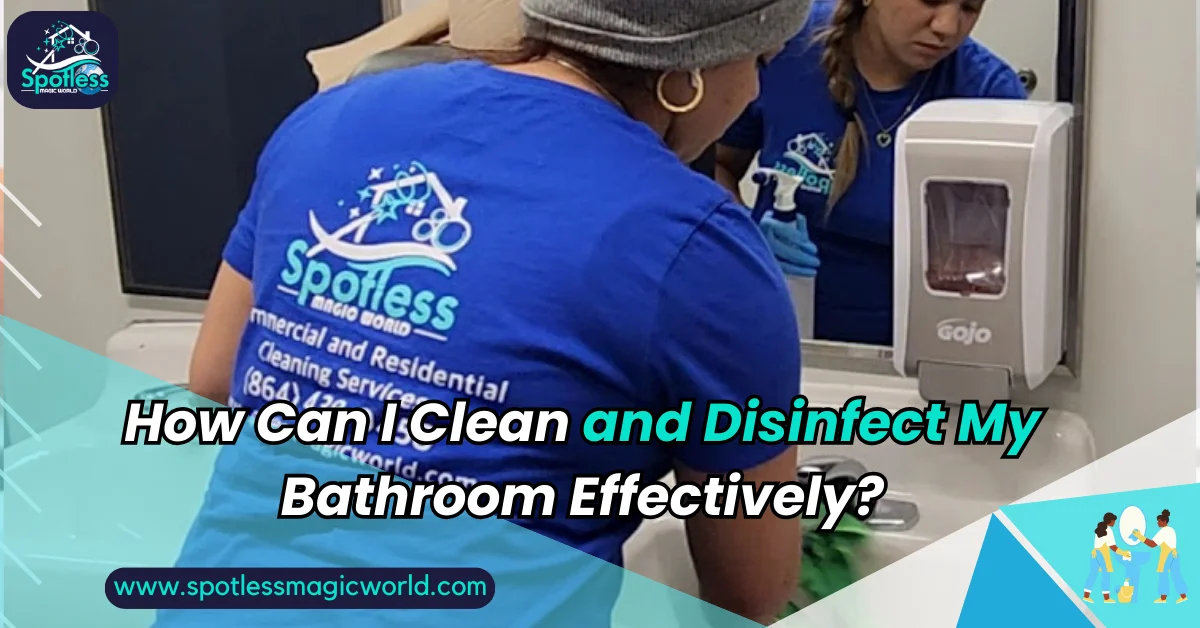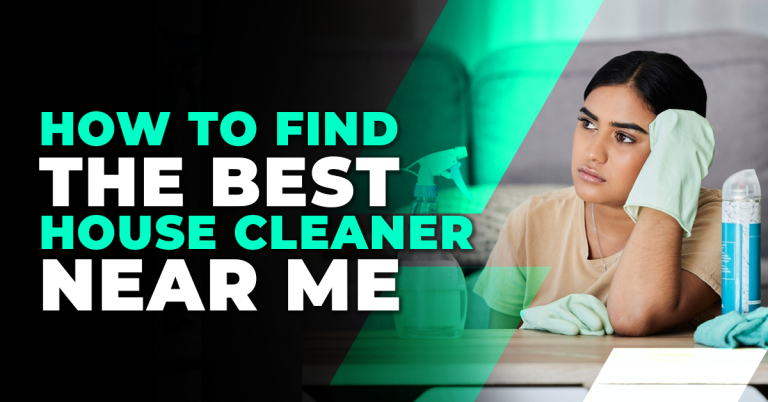Licensed And Insured

How Can I Clean and Disinfect My Bathroom Effectively?
Did you know that over the course of a lifetime, the average person spends approximately 1.5 years in the bathroom? It’s an astonishing amount of time, highlighting the significance of creating a clean and hygienic space.
According to a study conducted by the National Sanitation Foundation (NSF), bathrooms are one of the most germ-ridden areas in a home, with more than 500,000 bacteria per square inch found on commonly touched surfaces. These surfaces include faucet handles, toilet seats, and even your toothbrush holder. With such startling statistics, it’s clear that proper cleaning and disinfection are vital to maintaining a healthy living space.
In this article, we will explore the best practices and tips for cleaning and disinfecting your bathroom effectively. Whether you prefer to handle the task yourself or consider hiring a professional bathroom cleaning service, this guide will provide you with the knowledge and insights to maintain a pristine and germ-free bathroom.
What Is The Importance Of Cleaning and Disinfecting Your Bathroom?
Cleaning and disinfecting your bathroom is important for several reasons:
- Hygiene: Bathrooms can be breeding grounds for bacteria, viruses, and fungi that can cause infections and illnesses. Regular cleaning and disinfecting can help remove harmful germs and prevent the spread of disease.
- Odor control: Bathrooms can develop unpleasant odors due to the accumulation of dirt and moisture. Cleaning and disinfecting can help eliminate these odors and keep your bathroom smelling fresh.
- Maintenance: Regular cleaning and disinfecting can help prevent the buildup of grime, mold, and stains, which can damage surfaces and fixtures in your bathroom over time.
- Appearance: A clean and well-maintained bathroom can create a positive impression on visitors and enhance the overall aesthetic of your home.
Overall, regular cleaning and disinfecting of your bathroom is essential for maintaining good hygiene, preventing the spread of disease, and keeping your home looking and smelling fresh.
What Are Some of The Common Germs That Can Be Found In Bathrooms?
Bathrooms can harbor a variety of germs. There are many types of germs that can be found in bathrooms, including bacteria, viruses, and fungi. Some of the most common ones include:
- E.coli – This is a type of bacteria that can cause diarrhea and other gastrointestinal problems.
- Staphylococcus aureus – This is a type of bacteria that can cause skin infections, respiratory infections, and other illnesses.
- Salmonella – This is a type of bacteria that can cause food poisoning.
- Norovirus – This is a highly contagious virus that can cause vomiting and diarrhea.
- Candida albicans – This is a type of fungus that can cause yeast infections.
These microorganisms can lead to infections, allergies, and other health issues if not effectively eliminated through proper cleaning and disinfection. It’s important to keep bathrooms clean and disinfect frequently touched surfaces to prevent the spread of these and other harmful germs.
How Often Should You Clean and Disinfect Your Bathroom?
The frequency of cleaning and disinfecting your bathroom depends on several factors, such as the number of people using it, the level of activity, and personal preferences. As a general guideline, it is recommended to clean your bathroom at least once a week. However, high-traffic bathrooms or households with individuals who are more susceptible to illnesses may require more frequent cleaning.
Consider using fragrant cleaners or scented candles to add an extra touch of luxury and create an inviting atmosphere. Whether you’re getting ready for the day or winding down at night, a sparkling clean bathroom can help you feel refreshed and rejuvenated.
Materials and Equipment
To clean and disinfect your bathroom effectively, you will need the following materials and equipment:
Cleaning supplies: A good set of cleaning supplies is essential for tackling dirt, grime, and stains in your bathroom. Use a non-abrasive cleaner or a bathroom-specific cleaning solution to ensure the surfaces are not damaged during the cleaning process.
Disinfectant: Disinfectants play a crucial role in killing germs and bacteria. Look for disinfectants specifically formulated for bathroom use, ensuring they are effective against a wide range of pathogens. Always follow the instructions on the label for proper usage and safety precautions.
Gloves: Protect your hands from harsh chemicals and potential bacteria by wearing gloves. Choose gloves made of latex, vinyl, or nitrile, depending on your preference and any potential allergies.
Mask: When using strong cleaning agents or disinfectants, it’s advisable to wear a mask to avoid inhaling any fumes or irritants. Masks also provide an additional layer of protection against airborne germs.
Old towels: Keep a few old towels handy for wiping surfaces and drying off after cleaning. These towels can be dedicated specifically for bathroom use to avoid cross-contamination with other areas of your home.
Steps
Let’s now explore the step-by-step procedure for thoroughly cleaning and disinfecting your bathroom:
Prepare your bathroom: Before starting the cleaning process, remove any personal items, such as toothbrushes, soap dispensers, or towels, from the surfaces you will be cleaning. This allows you to clean more thoroughly and ensures no items get damaged during the process.
Clean the toilet : Start by applying a toilet cleaner to the inside of the bowl and allowing it to sit for a few minutes. While the cleaner is working, use an all-purpose cleaner to clean the exterior surfaces of the toilet, including the seat, lid etc.
Clean the sink : Begin by clearing any items from the sink area. Use a mild bathroom cleaner or a mixture of water and vinegar to clean the sink basin, faucet, and handles. Pay special attention to any soap scum or mineral deposits. For stubborn stains, you can use a non-abrasive scrub brush or sponge. Rinse the sink thoroughly with water and dry it with a clean towel.
Clean the bathtub or shower: Remove any items from the bathtub or shower area, such as bath mats, shampoo bottles, and loofahs. Spray the surfaces with a bathroom cleaner or a mixture of warm water and liquid soap. Scrub the walls, floor, and fixtures using a soft brush or sponge. Pay extra attention to areas prone to soap scum and mildew, such as corners and grout lines. Rinse the surfaces thoroughly with water and wipe them dry.
Clean the mirror: Spray a glass cleaner or a mixture of water and vinegar onto a microfiber cloth or a paper towel. Wipe the mirror in a circular motion until it is clean and streak-free. For stubborn spots or fingerprints, you can use a cotton ball soaked in rubbing alcohol. Make sure to clean the frame of the mirror as well.
Clean the floors: Sweep or vacuum the bathroom floor to remove any loose dirt and debris. Fill a bucket with warm water and add a suitable floor cleaner. Use a mop or a microfiber cloth to clean the floor, working from one side to the other. Pay attention to corners and edges. Rinse the mop or cloth regularly in the cleaning solution to avoid spreading dirt. Once the floor is clean, allow it to air dry or use a clean towel to speed up the drying process.
Disinfect your bathroom: After the cleaning process is complete, it’s important to disinfect the surfaces to kill any remaining germs and bacteria. Follow the instructions on the disinfectant product and apply it to the toilet, sink, bathtub or shower, and other high-touch surfaces such as doorknobs and light switches. Allow the disinfectant to sit for the recommended amount of time to ensure effective germ elimination. Finally, rinse the surfaces with water and dry them thoroughly.
Final Thoughts
Cleaning and disinfecting your bathroom effectively is crucial for maintaining a healthy and hygienic environment. By following the steps outlined in this guide and using the recommended materials and equipment, you can ensure that your bathroom remains clean, fresh, and free from harmful germs.
Regular maintenance and periodic deep cleaning, along with the use of professional bathroom cleaning services, can help you achieve the best results and promote a safe and inviting bathroom for you and your family.
Remember, implementing bathroom cleaning tips, using the best bathroom cleaning products, and adopting eco-friendly practices can contribute to a cleaner and healthier living space. Whether you choose to clean your bathroom yourself or hire a reputable bathroom cleaning company, the effort you put into maintaining a clean and disinfected bathroom will be well worth it in terms of the health and well-being of your household.






